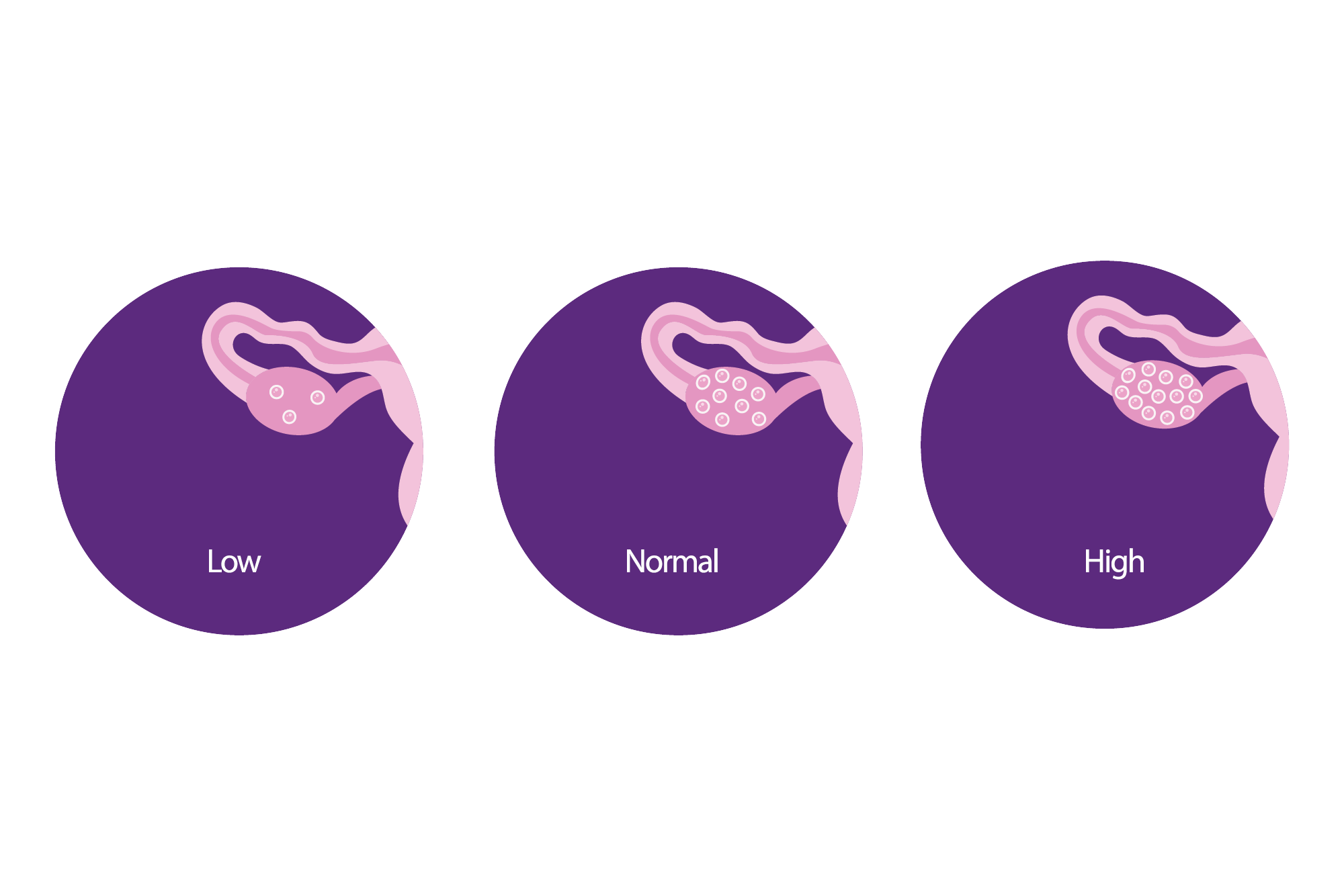- Fikriye Gedikoglu
- 0 Comments
One of the most important tests used to evaluate women’s fertility potential is the AMH (Anti Müllerian Hormone) test. The AMH test measures women’s ovarian reserves, helping to determine their chances of natural pregnancy and their response to reproductive treatments such as in vitro fertilization.
In this article, we will discuss in detail how the AMH test is performed, in which cases it is applied, normal value ranges, and what can be done in case of low/high AMH levels.
What is the AMH Test?
AMH is a hormone secreted by antral follicles (precursor eggs) in the ovaries. The level of this hormone helps determine the number of eggs remaining in a woman’s ovaries (ovarian reserve). If the AMH level is high, ovarian reserve may be good, if it is low, ovarian reserve may be decreased.
Women are born with a certain amount of egg reserve, and this reserve decreases with age. The AMH test is an important indicator, especially for women considering in vitro fertilization treatment, and plays a major role in treatment planning.
How is AMH Testing Done?
The AMH test can be performed with a simple blood test and can be performed on any day and at any time of a woman’s menstrual cycle.
AMH Test Stages:
Blood Collection:
- The test is usually performed in the morning on an empty stomach, but fasting is not mandatory.
- You can donate blood for testing at any time during your menstrual cycle.
- It is performed by taking a small blood sample from your arm.
Laboratory Analysis:
- The blood sample is analyzed in special laboratories to determine the AMH level.
- Results are usually available within 1-2 days.
Evaluation of Results:
- The AMH value obtained is interpreted by the doctor, taking into account the woman’s age, general health status and reproductive history, and the antral follicle count performed by ultrasound.
The AMH test is evaluated together with other fertility tests (hormone tests such as FSH, LH, estradiol) to provide the most accurate results.
Why is AMH Testing Done?
AMH testing may be recommended by doctors for a variety of reasons. Here are the most common uses for AMH testing:
1. To Assess Women’s Fertility Status
- It is performed to learn the ovarian reserve of women who are planning to have children.
- It is helpful in determining future fertility potential for women planning pregnancy at an older age.
2. In Vitro Fertilization (IVF) Treatment Planning
- AMH levels are used to understand how the ovaries will respond to medications during IVF treatment.
- High AMH indicates good ovarian reserve, while low AMH indicates diminished reserve.
3. For Diagnosis of Polycystic Ovary Syndrome (PCOS)
- AMH levels are often higher than normal in PCOS patients.
- High AMH indicates an excess of small follicles and may aid in the diagnosis of PCOS.
4. To Determine the Risk of Early Menopause
- In women under 35, low AMH levels may indicate a risk of early menopause.
- It can give an idea about whether or not early menopause will occur in women with a genetic predisposition.
5. For Ovarian Cancer Monitoring
- The AMH level can be used to monitor the presence of certain ovarian tumors and their response to treatment.
What are the Normal Values for the AMH Test?
AMH levels vary with age and can be different in each woman. However, generally accepted AMH value ranges are as follows:
AMH Level (ng/mL) | Degree | Ovarian Reserve Status |
1.5 – 4.0 | Normal | Healthy ovarian reserve |
1.0 – 1.5 | Low | The reserve is decreasing |
0.5 – 1.0 | Very Low | Low chance of pregnancy |
Below 0.5 | Very Critical | Ovarian reserve is running out |
AMH levels naturally decline as women age. AMH levels are usually lower in women over 40, but in some women, the decline can begin at an earlier age.
What Does Low AMH Level Mean?
A low AMH level indicates that your ovarian reserve is diminished, but it doesn’t necessarily mean you can’t get pregnant.
Recommendations for women with low AMH levels:
- It is necessary to consult a specialist before extending the period of getting pregnant naturally.
- The chance of pregnancy can be increased with assisted reproductive techniques such as in vitro fertilization.
- Although healthy diet and lifestyle changes may not improve AMH levels, they can support egg quality.
Before seeking medical support, you can strengthen your reproductive health with vitamins, antioxidants and healthy living habits.
AMH Test and Pregnancy: My AMH Level Is Low, Can I Get Pregnant?
Yes, pregnancy is possible even if AMH levels are low. What is important is not only the ovarian reserve but also the quality of the eggs.
Tips for Getting Pregnant with Low AMH:
✔ Create a treatment plan with your obstetrician.
✔ Reduce stress and eat healthy.
✔ Avoid smoking and alcohol.
✔ Consider assisted reproductive methods such as in vitro fertilization.
In IVF treatment, the chance of pregnancy can be increased by applying personalized treatment protocols for women with low AMH levels.
Conclusion: How Reliable is the AMH Test?
The AMH test is one of the most reliable tests to assess fertility capacity. However, it is not sufficient on its own and should be evaluated together with antral follicle count and other fertility tests.
In summary:
- The AMH test is a simple blood test to determine ovarian reserve.
- It plays a critical role in IVF treatment planning.
- Low AMH levels may reduce the chances of natural pregnancy, but it is not a definite obstacle.
- High AMH may indicate conditions such as PCOS.
- In order to interpret the test result correctly, an expert opinion must be obtained.
If you are wondering about your fertility status or are considering IVF treatment, seeking support from a specialist will help you best manage your chances of future pregnancies.

